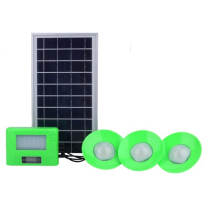A report released a few years ago stated that only 13% of rural households had access to any kind of electricity. Rural households account for 67% of the population and that would mean 100% of urban households had electricity. That’s obviously false. We can assume that the 13% figure referred to those connected to the national grid.
Back to the 37.1%, that 37.1% is for households that are connected to the national grid and ignores all other sources of electricity. Turns out solar has been rising in popularity.
Of the households that have access to electricity, 46% reported that the main source for them was solar. When considering the whole country, that translates to 46% x 68.9% = 31.7%. So 31.7% of all households in the country use solar power as their primary source of electricity.
To note is that a distinction is made between solar systems used. There are households with installed solar systems and those without. An installed solar system would include the solar panels, proper solar batteries, battery monitors, inverters and the works. All professionally installed. Only 6.3% of electricity users had installed systems.
Most households do not have installed solar systems, making up 39.7% of all electricity users. A household that has one of the popular solar lighting systems(Sinoware SHS)is considered to have access to electricity. So the 39.7% figure is deceivingly high. It is telling that most of these solar users were in the rural areas. The number of households in the rural areas with these uninstalled solar systems is 16 times more than the urban one.

